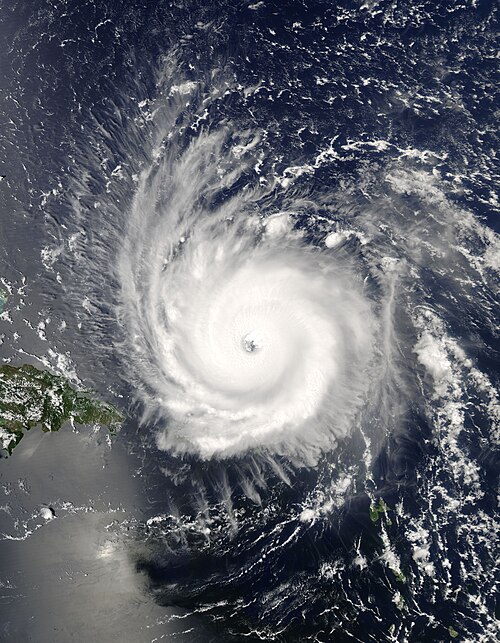Hurricane Frances
Hurricane Frances was the sixth tropical storm, fourth hurricane, and third major hurricane of the 2004 Atlantic hurricane season. Frances was one of the four hurricanes to have a major impact of the U.S. state of Florida in 2004. Frances made landfall near the same location Hurricane Jeanne would make landfall in about two weeks later. Frances caused about 101 tornadoes from Florida to Virginia. Frances left 49 deaths and $12 billion in damage.
| Category 4 major hurricane (SSHWS/NWS) | |
 Hurricane Frances as a Category 4 hurricane | |
| Formed | August 24, 2004 |
|---|---|
| Dissipated | September 10, 2004 |
| Highest winds | 1-minute sustained: 140 mph (220 km/h) |
| Lowest pressure | 928 mbar (hPa); 27.4 inHg |
| Fatalities | 49 |
| Damage | $10 billion (2004 USD) |
| Areas affected | British Virgin Islands, Puerto Rico, U.S. Virgin Islands, Turks and Caicos Islands, The Bahamas, Florida, Georgia, North and South Carolina, Ohio, and other states, southeast Canada |
| Part of the 2004 Atlantic hurricane season | |
Retirement
- REDIRECT Template:See also
Because of the damage it caused in the United States, the name Frances was retired in the spring of 2005 by the World Meteorological Organization, and will never again be used for an Atlantic hurricane. In 2010 the name Fiona is on the list instead.
Hurricane Frances Media
Photo of Hurricane Frances taken by Mike Fincke aboard the International Space Station on August 27, 2004
Radar mosaic of Hurricane Frances making landfall on Hutchinson Island near Port St. Lucie, Florida, on September 5
A severely damaged mobile home in Pahokee
Xenon lights illuminate the 525 ft (160 m) tall Vehicle Assembly Building at Kennedy Space Center, Florida where workers make repairs on September 30, 2004.
President George W. Bush helps deliver water at a relief center in Ft. Pierce, Florida.







